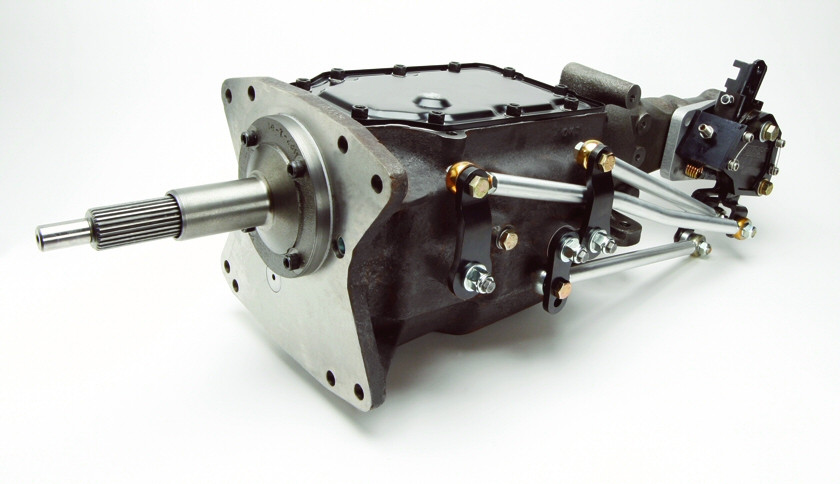About Press Copyright Contact us Creators Advertise Developers Terms Privacy Policy & Safety How YouTube works Test new features Press Copyright Contact us Creators. Considering on installing a Jerico 4-Speed in my 69 Roadrunner that has an A833 that unfortunately is not performing up to the task. Want to install a Jerico with a Long vertical gate shifter in the factory 4-Speed hole without hacking or cutting it up. Really need to know the unforeseen obstacles so that I can plan out and get what is needed. Transmission, Jerico 4-speed Winston Cup Rev. 4 (WC4-4) aluminum case, roller mainshaft and tailshaft, input shaft to mate with Ford pilot bearing, low profile top cover (SPECIAL ORDER) 2.19 1st gear, 1.51 2nd gear, 1.23 3rd gear & 1-1 4th gear. Jerico 4 Speed Revision 4.2 Transmission. The Revision 4.2 Includes all of the Benefits of the Revision 4 Plus: Ball Bearing Mid-Center Support (for increased strength and gear deflection) CNC Billet Shifting Forks CNC Billet Top Cover. Dog Rings and Sliders for Quick and Easy Shifting. Webbed Dog Rings.
|
Horsepower = Torque x RPM / 5252
Horsepower – What is it exactly? You can see in the formula above that it has something to do with torque; you can also see that engine speed (RPM) is a factor. The formula is really very simple, is over a hundred years old and it may surprise you to find it was based on the power of, you guessed it, a four legged horse. Horsepower is simply a rating of an engines ability to do work. You have horsepower or a fraction thereof, the wind or a river have horsepower potential as well. Two important factors involved in figuring horsepower are; 1. there must be a force and 2. time to do the required work is a factor.
For the racer, the work is to get the race car or race truck from point A to point B as quickly as possible. The force is the engines torque output. This force is multiplied by engine speed (the time factor) to produce higher and higher ability (horsepower). The divisor (5252) in the above formula is referred to as the formula constant.
Now, back to the farm and why we use the words horse and power to describe our engines ability to do work. As most of us know, around a hundred and ten years ago horses (in some countries oxen or water buffalo) were used almost exclusively to help do the work. They were the motive power pulling our vehicles, powering our farm tools, and yes, even the power used to win quarter mile (and longer) races.

Then into the picture comes Dr. Watt, the guy with his name on the light bulb. Dr. Watt introduces the steam engine. Dr. Watt claims that this engine will replace trusty Mr. Ed (the horse), the power plant that has served man-kind for many years. Farmers were skeptic to say the least. Dr. Watt then developed a formula for rating or comparing his steam engine to the abilities of old reliable Mr. Ed, the horse, thus the term “horsepower”.
The original formula went as follows:
One horsepower = the ability to do work equal to that of lifting 33,000 lbs. one foot in one minute. According to Dr. Watt’s research, this was believed to be the capability of a strong work horse. The actual formula came about with a bit of experimenting and some simple calculating. Dr. Watt first witnessed that a strong horse pulled with a force of around 180 pounds. The work circle the horse followed had a circumference of 2 x pi x a radius of 12 feet, or 75.398 feet. The horse could make 144 trips around the work circle in one hour, or 2.4 trips per minute, for a speed of approximately 181 feet per minute.
Jerico 4 Speed For Sale

To convert the horse’s ability into measurable leverage or torque, Dr. Watt multiplied 180 pounds x 181 feet and then rounded the answer to 33,000 pounds feet per minute or 550 pounds feet per second. This became the norm for 1.0 horsepower.
The horsepower formula looked like this:
Horsepower = 6.2831853 x RPM x Torque / 33,000
This formula can be reduced by dividing the right side of the equation by 2 x pi x a. You can then eliminate 6.2831853 and reduce 33,000 to 5252, bringing us back to the simple formula found at the beginning of this explanation and shown here again.
Horsepower = Torque x RPM / 5252
This is the formula applied to the engines torque measurement when tested on a dynamometer. Of course on today’s computerized dynamometers all the calculation is done electronically. On older equipment, torque was found by measuring the resistance of a device known as a Prony Brake against the flywheel end of the crankshaft. That is why output figures were, and sometimes still are, referred to as “brake torque” and “brake horsepower”.
Today we are still using Watt’s old formula (or a converted form of it) and the same terminology to rate, evaluate and compare our engines. Maybe this is fitting considering that current day internal combustion engines have changed very little in design from those produced over a hundred years ago.
Jerico 4 Speed Parts

So, one more time: What is horsepower? Horsepower is the engine’s ability to do work on a per minute basis. I just had a visual of 800 horses teamed up to and pulling a 3000 lb car down the quarter mile strip. In reality and if geared properly, the elapsed time should be approximately 9.05 seconds and the mph around 150.6 mph, but that involves two other formulas that I’ll explain in another post. Cheers, Mitch at Gear Vendors, Inc. 619-562-0060 ext 123
